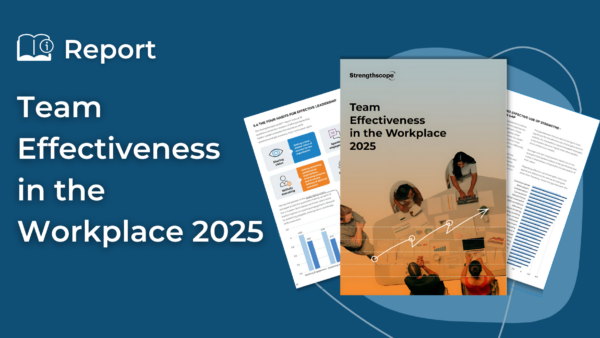First, Break All The Rules by Marcus Buckingham and Curt Coffman was first published in 1999 which means that the strengths approach to talent assessment and development has been around for almost two decades. Although many of the ideas in the book were introduced by others such as Peter Drucker as early as the 1960’s, Buckingham and Coffman’s book sparked a different way of thinking – that focusing on strengths can be a more powerful way of accelerating learning and performance in organisations.
Today, strengths-based HR approaches are one of the fastest growing trends in human resources, yet many misconceptions about the approach still remain. This limits its full adoption by HR and talent decision-makers which is a great pity as the approach offers huge potential to significantly improve performance, engagement, teamwork, innovation, well-being and many other crucial HR outcomes.
My intention in this article is to expose some of the most common misunderstandings, as well as baseless criticism attracted by this approach, so the full power of strengths-based HR is better understood and realised by practitioners looking to achieve extraordinary shifts in performance and engagement.
People know their strengths
Writer and management guru Peter Drucker observed “most people think they know what they are good at. They are usually wrong… And yet, a person can perform only from strength.” We agree with this assertion. Our work in this area over more than 10 years suggests that people don’t fully understand their strengths or take them for granted. Even if they do understand their strengths they have mental blocks around talking about them, including fear of coming over as complacent or arrogant. By contrast, most people, especially those with greater work experience, are all too familiar with their weaknesses. However, we haven’t met one person who has achieved excellence by turning their weaknesses into areas of mastery.
It is therefore crucial that we help people to discover their strengths and optimise them at work every day, just as elite sports people or performing artists need to understand their strengths intimately to become experts in those tasks where they have potential and energy.
Playing to your strengths is the easy option
Great performance is all about positive stretch in areas of greatest strength. In other words, it involves doing things better and better by leveraging your strengths. Like NASA’s pioneering test pilots in the 1950’s, so brilliantly portrayed in the blockbuster movie, The Right Stuff, it involves stretching yourself outside your comfort zone to test the limits of what’s possible. It is this stretch that helps people to grow and find the outer reaches of their potential; they learn about their true passions, values and work they find most meaningful. This is far from easy as we know from the perseverance and hours of practice by Olympic athletes and maestro musicians who hone their strengths for many years to achieve moments of peak performance.
In fact, it is a lot harder to optimise one’s strengths and move from good to great than it is to improve one’s weaknesses from poor to mediocre. However, it is of course a lot more satisfying and rewarding for the individual as well as more valuable for the company when a person achieves greatness in areas of strength.
Ignoring or avoiding weaknesses
The strengths approach, when implemented effectively, doesn’t ignore weaker areas and other performance risks (including overdone strengths and psychological barriers such as poor self-confidence). In fact, it is much more powerful in helping to deal with these for a variety of reasons:
- It ensures more positive, solutions-based conversations about how to reduce and mitigate weaker areas and other risks to peak performance. We coach people to consider creative ways to use their strengths, and those of co-workers, to deal with weaker areas and the breakthrough thinking and action we get is fantastic. It is easy to understand why – when people consider weaker areas using a “strengths lens” they engage in creative problem solving and take more ownership for changing their behaviour.
- It ensures a less threatening conversation, removing fears and defensiveness about talking about weaker areas. One of the underpinning principles of the approach is that we are all ‘spiky’, possessing great strengths and also great vulnerability. We always emphasize this at the outset of a coaching or feedback conversation which encourages people to talk more openly about their weaker area and other risks/blockers to performance.
- It encourages people to partner with others who have strengths in areas where they are weaker. This complementary partnering not only helps reduce the impact of weaker areas, it also builds a strong team culture within the organisation.
The strengths approach is unique in helping people become aware of and reduce strengths that are overdone, or used in the wrong way, at the wrong time or in the wrong combination resulting in disappointing outcomes. For example, people who are too confident may become arrogant and those that are too compassionate may find it difficult to avoid becoming overinvolved in their co-workers’ personal problems.
The damaging effects of overdone strengths was found in research conducted by Centre for Creative Leadership in the 90’s and should be well established and practised by now. However, because of the competency and weakness-based nature of most training and development, the vast majority of people we deal with have never had feedback on or considered what happens when their strengths are overplayed. Helping them understand and manage the triggers and limiting effects of overdone strengths is an integral part of the strengths-based approach.
Doing only the things you like doing
Many people assume that the strengths approach means that people can choose what they love to do and leave everything else. However, this is not the case.
We encourage people to increase the amount of work that they are doing that plays their natural strengths as this increases their engagement and contribution. However, we go to great lengths to point out that this doesn’t mean you have license to avoid the less energising aspects of the job. In fact, one of our strategies is what we call “going to the gym when you really don’t want to” and involves building daily habits in activities where one’s energy is lower and the activity can’t be delegated to others.
To make these tasks more enjoyable, we encourage people to use their existing strengths to build new daily habits which will be more energising for them. For example, I have a weakness in the area of Efficiency so have in the past often been late for meetings or double booked myself. I now use my Leading and Self-improvement strengths to bring others in the help me improve my Efficiency and also use my Empathy strength to visualise how others might feel if I let them down.
Pursuing happiness as an end goal
Positive psychology and the strengths-based approach have become largely synonymous with happiness in the popular press and literature. This is due to the early focus of highly influential positive psychologists like Martin Seligman, who tended to focus on the “happiness” concept more than any other.
However, a central question that must be asked is whether happiness should be pursued as an end in itself and whether happier people are actually more productive at work.
Happiness is a highly subjective state that depends on many complex factors including our genetic make-up, our upbringing and our internal representations of our achievements and progress. Rather than being an end in itself, it is a by-product of success. So, if employers really want to help people to improve their sense of subjective well-being and happiness, there is no panacea or standard formula. They need to ensure they understand each employee’s aspirations, strengths and values and help people achieve their goals in a way that is meaningful to them. This will facilitate personal feelings of success and progress, and in all probability, higher levels of subjective wellbeing and happiness.
There is of course a danger that focusing too much on happiness as an end in itself can produce an appetite for an easy life rather than a culture of hard work, success and continuous improvement. When taken to the extreme, this fuels an “entitlement mindset” marked by high levels of complacency, passivity and work-shy behaviour; pleasurable pursuits become more important than work, mental stretch and learning.
Dismissing the value of negative emotions
There are many who assume that the strengths approach means that people should always be happy which diminishes the value of the full range of emotions at work.
However, as was so well shown in the recent Pixar movie, Inside Out, every emotion – including sadness and anger – has a role to play in ensuring success, productive interpersonal relations and wellbeing of employees.
The strengths approach doesn’t encourage people to suppress emotions, simply to be aware of them and the implications on their behaviour and outcomes. So, if someone is angry or sad, we encourage them to focus on strengths – theirs and those of others who can support them – to help deal with the situation more positively. This enables them to overcome their negative emotions more quickly and constructively. For example, rather than screaming at someone out of anger, a person instead might choose to use their Creativity strength to find a creative win-win solution to the problem.
The strengths approach offers tremendous potential and independent evidence gathered over the past two decades demonstrates that it can provide significant benefits over traditional, weakness-based approaches to HR and talent management. It appears that we are now reaching a ‘tipping point’ where more and more organisations are looking to implement this approach into various parts of their HR plans and programs. However, confusion and unfounded criticism still abounds which limits the full potential of this approach. Through ongoing discussion, debate and clarity, we hope that organisations will continue to try out this approach as businesses built around the talents and strengths of their people will outperform those that focus on problems and weaknesses every time.
James Brook










